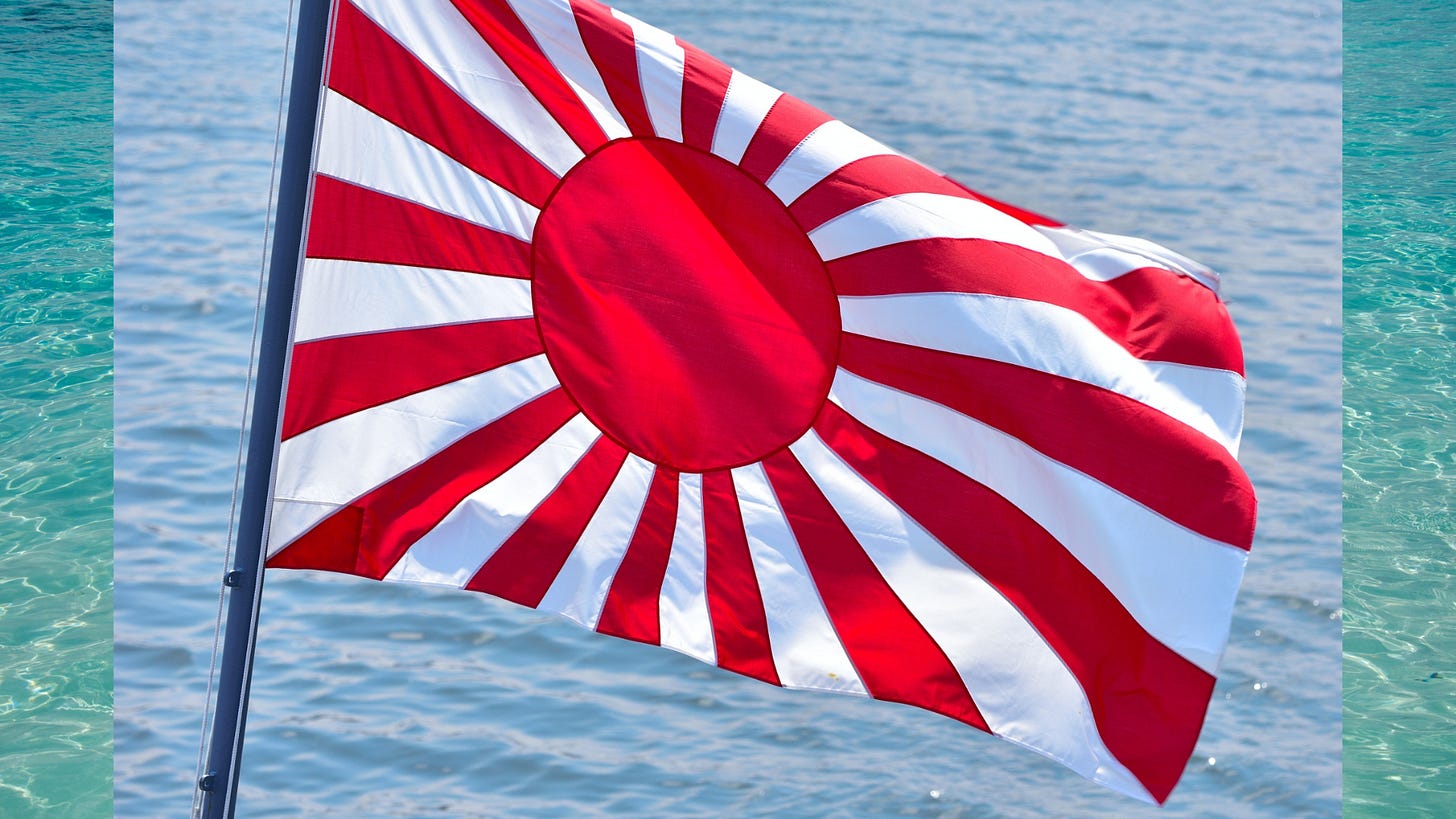Is the Rising Sun Flag banned?
History, Meaning, and Misunderstandings of Japan’s Rising Sun Flag – Written in Easy Japanese and English

日本(にほん)の旭日旗(きょくじつき)は、「禁止(きんし)されている」と思(おも)っている外国人(がいこくじん)がいます。この文章(ぶんしょう)では、そのような思(おも)いちがいがどうして生(う)まれたのかと、本当(ほんとう)のことについて説明(せつめい)します。
Some people outside Japan believe the Rising Sun Flag is banned. This article explains why that misunderstanding happened and what the truth is.
また、ナチスのハーケンクロイツ(Hakenkreuz)と日本(にほん)の旭日旗(きょくじつき)は、意味(いみ)や歴史(れきし)がちがいます。ハーケンクロイツは第二次世界大戦(だいにじせかいたいせん)のとき、ナチス・ドイツが使(つか)った旗(はた)で、戦争犯罪(せんそうはんざい)の象徴(しょうちょう)とされ、今(いま)は多(おお)くの国(くに)で禁止(きんし)されています。
The Nazi swastika (Hakenkreuz) and Japan’s Rising Sun Flag have different meanings and histories. The swastika was used by Nazi Germany in World War II. It became a symbol of war crimes and is now banned in many countries.
一方(いっぽう)、旭日旗(きょくじつき)は日本(にほん)で古(ふる)くから太陽(たいよう)を表(あらわ)すデザインとして使(つか)われ、今(いま)も日本国内(にほんこくない)や国際法(こくさいほう)で禁止(きんし)されていません。
The Rising Sun Flag has been used in Japan for a long time as a design showing the sun, and it is not banned in Japan or under international law today.

